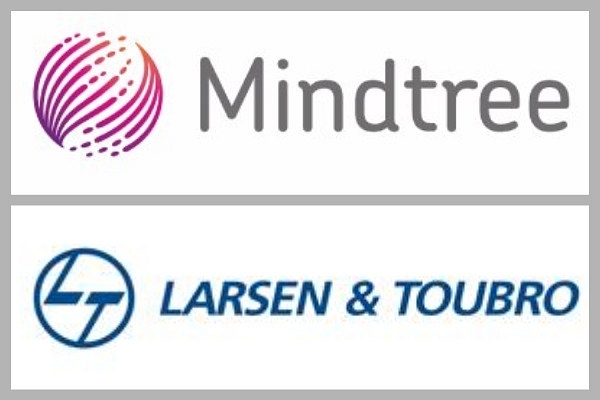
L&T’s Hostile Bid For Mindtree Is About Scale, But For It To Work, Hostilities Must End Soon
L&T should keep in mind that in a people-oriented business, a hostile takeover can bring more harm than synergies unless the hostilities end soon.
And for the Mindtree management, the advice is simple: when scale is vital, it makes no sense to resist a takeover.
The battle for control of Mindtree Consulting is taking an interesting turn, with the firm’s promoters Subroto Bagchi, K Natarajan, Rostow Ravanan, and Parthasarathy N S deciding to take a last-ditch stand against the hostile takeover by Larsen & Toubro (L&T).
Having acquired a 20.32 per cent stake from investor V G Siddhartha for a hefty Rs 3,269 crore, L&T, which has its own software services subsidiary in L&T Infotech, will make an open offer for Mindtree for another 31 per cent at least, and is leaving nothing to chance by mandating open-market purchases of 15 per cent. The L&T war chest for the acquisition is upwards of Rs 10,000 crore.
That the Mindtree promoters are unhappy with the turn of events is an understatement. This became clear when the promoters decided to fight back with a buyback of shares (which may be infructuous when an open offer is at hand), and cranking up the emotional element in the defence.
Bagchi gave up his post as chairman of the Odisha Skill Development Authority to lead his forces. He said that while the company was focused on institution building and taking its turnover past the $1 billion mark, “we have also drawn the attention of people who really don’t care about all this.”
He also claimed that the promoters were offered “huge bags of money” to sell out, but they didn’t.
The problem with this pitch is that L&T is no stranger to the idea of institutional-building either. And given the changes happening in the information-technology field, where all businesses have to scale up to become product or platform builders or remain low-margin price takers in the old game of pure labour arbitrage, takeovers will be key. The industry has to quickly shift focus from services to digital and SMAC (social, mobile, analytics, cloud) technologies, and this again needs resources and scale.
The antagonism on the Mindtree side probably stems from the realisation that neither L&T Infotech nor Mindtree has real global scale just yet. The reason why the former is a predator and the latter prey is L&T’s huge war chest from its construction, engineering, and other businesses.
L&T’s cash balances at the end of December 2018 totalled Rs 16,000 crore, which means the Mindtree acquisition can be funded entirely without debt. For L&T Infotech, it is about scale; for the parent company, Mindtree is about balancing the conglomerate’s business portfolio, adding the more stable software business to the riskier and more volatile engineering and construction businesses.
Together, L&T Infotech plus Mindtree would top $2 billion in revenues, with the former already at $1.3 billion and the latter bidding fair to hit the $1 billion market over the next few quarters. The L&T management believes that they can grow faster together than separately.
A Moneycontrol report, quoting Elara Capital, notes that the combined entity “will have a trailing 12 months revenue of $837 million in BFSI (banking, finance, insurance), $520 million in hi-tech and media and $554 million in manufacturing, retail and consumer products… This implies scale larger than Tech Mahindra in BFSI, hi-tech and media verticals. We regard $500 million in annual revenue as a good threshold to judge critical mass in a particular vertical that will enable a mid-cap firm to compete against Tier-1 peers.”
The question, however, remains: will a contested takeover lead to bad blood and soured people relations, after which many talented people leave Mindtree?
While one must not make too much of the emotional appeal of the Mindtree founders to resist the takeover, if the hostile takeover is to succeed, L&T has to take precautions.
First, it may help to formally commit to retain Mindtree as a separate entity in the foreseeable future, with synergies being looked for only in terms human resources, finance, and geographical and product focus.
Second, there can be a formal transfer of overlapping areas of clients and businesses after a deep study, so that each entity is able to scale up in the chosen verticals faster and with greater clarity.
Third, clients of Mindtree must be reassured that there will be no conflicts of interest with the acquiring firm and its businesses.
Of course, the longer-term logic may well dictate a merger, but if this is rushed, there is a greater chance of damaged human resource potential, with departures of talent exceeding the acquisitions in the short-to-medium term.
The business logic of scale is with L&T, but the acquiring management will do well to remember that in a people-oriented business, a hostile takeover can bring more harm than synergies unless the hostilities end soon. A backdoor channel to the Mindtree promoters to ensure the company’s short-term independence may be the best way forward.
For the Mindtree management, the advice is simple: when scale is vital, it makes no sense to resist a takeover that will benefit shareholders and employees in the long run. What the Mindtree promoters should ensure is that what they built is not destroyed. This calls for a conversation with the bidder, not hostility to the very idea of takeover.